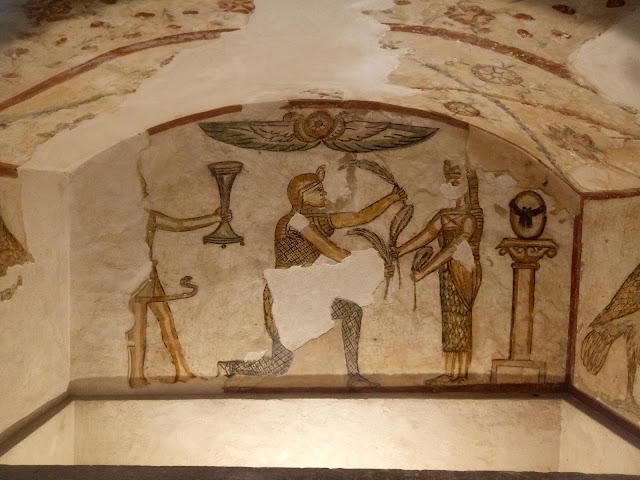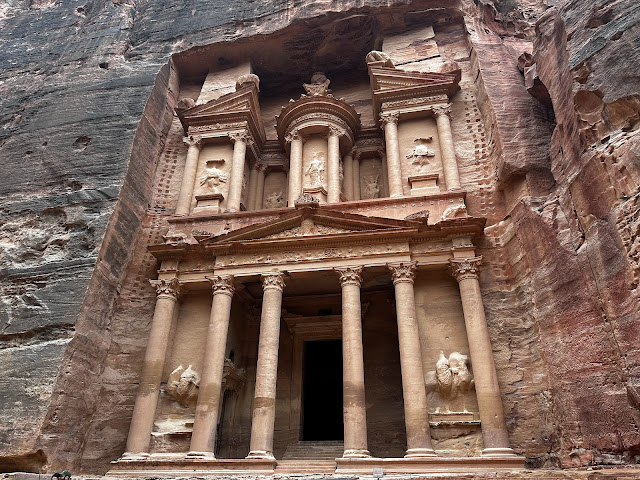Tigrane Tomb in Alexandria
Discovered in 1952 CE within the eastern necropolis of Alexandria, the Tigrane Tomb was subsequently relocated to the archaeological site currently known as the Catacombs of Kom El Shoqafa.
Even though the tomb had originally consisted
of one room fitted with loculi and another in the form of a triclinium-shaped
burial chamber, only the burial chamber has been removed from the ground and
currently on display. Dating back to the 2nd Century CE, many
features of the tomb including the art within the walls depicts a combination
of Roman, Greek, and Egyptian cultures, similar what is visible within the
Catacombs of Kom El Shoqafa.
Two Roman style statues are displayed on either
side of the entrance to the relocated tomb.
 |
| The two roman style statues displayed on either side of the entrance to the tomb |
The entrance walls on either side of the burial chamber are decorated with the image of a male figure placed in a panel under an "Apis" bull (Apis was the most important and highly regarded bull deity of ancient Egypt).

The image of a male figure placed in a panel under a "Apis" bull depicted on either side of the burial chamber
The images of snakes which decorate the walls
of the tomb have been associated with the Egyptian goddess Isis. Aside from the
snakes, images of falcons and sphinxes have also been used to decorate the
walls of the tomb.

The images of snakes which decorates the walls of the tomb have been associated with the Goddess Isis
The tomb contains three niches representing the mummification and resurrection of the Egyptian deity Osiris (the god of fertility, agriculture, the afterlife, the dead, resurrection, life, and vegetation in ancient Egyptian religion).
The wall of the central niche represents the
mummification of Osiris. It has the image of a mummified Osiris lying on what
appears to be a Roman style bed. On either side are his sister goddesses Isis
(who was also his wife) and Nephthys. Behind each of the goddesses on either
side is a falcon sitting on a high pedestal. A winged sun disc is depicted to
be floating from the above.

The wall of the central niche
God Anubis (the god of funerary rites, protector of
graves, and guide to the underworld, in ancient Egyptian religion) is depicted in
the form of a canine on the inside walls of the pilasters
in the central niche.
The right niche portrays the completion of the story. In the image, a man who is considered to be depicting Osiris is rising towards a female goddess or priestess who is considered to be Isis. Osiris appears to be holding palm branches whereas Isis appears to be holding large feathers. The image standing behind Osiris holding what appears to be a staff and altar is thought to be Horus.








Comments
Post a Comment